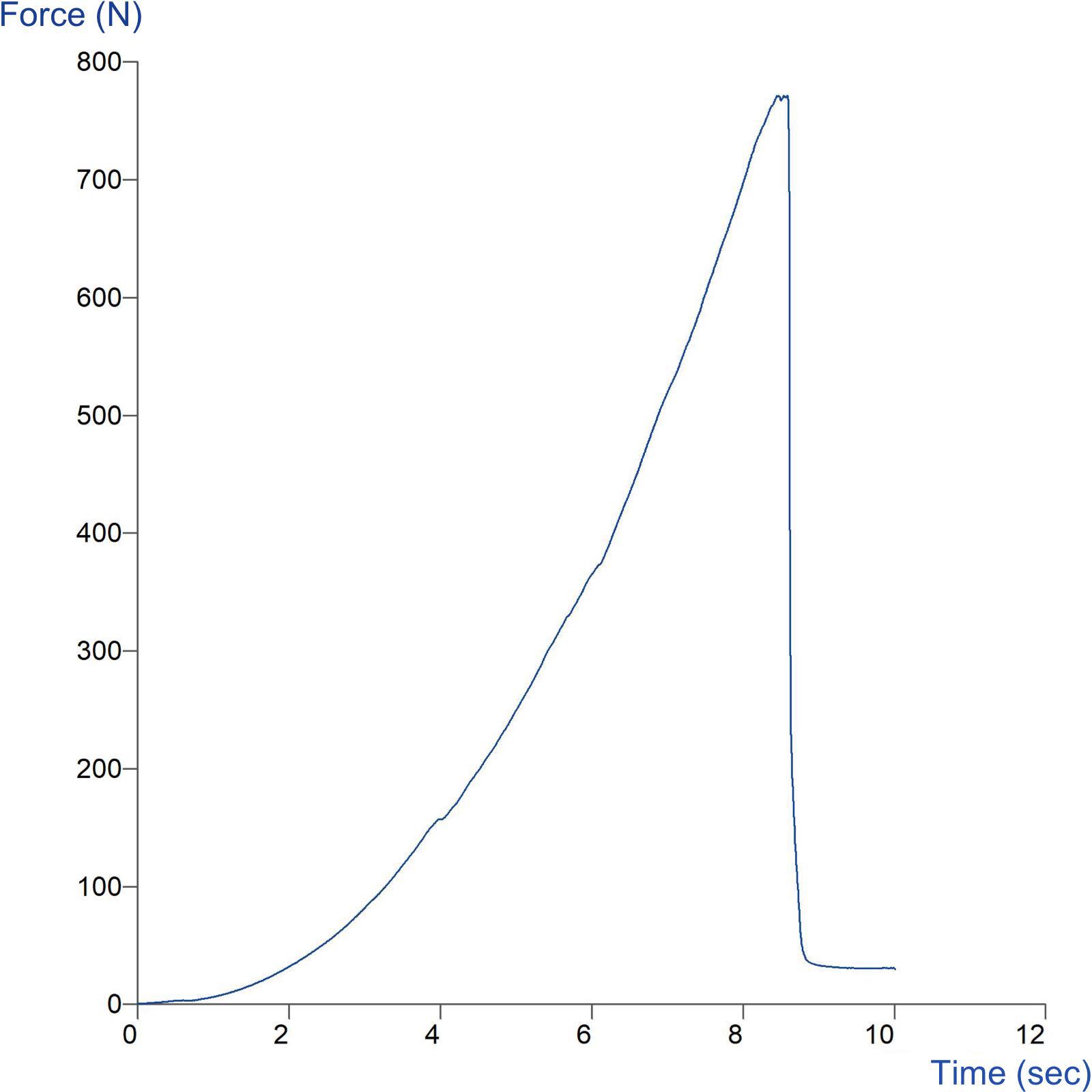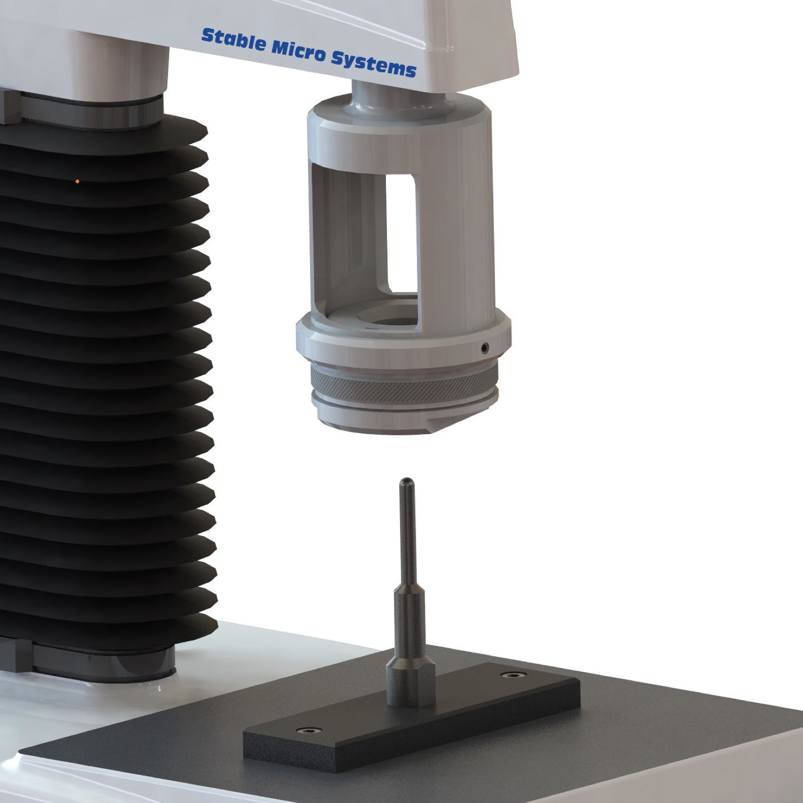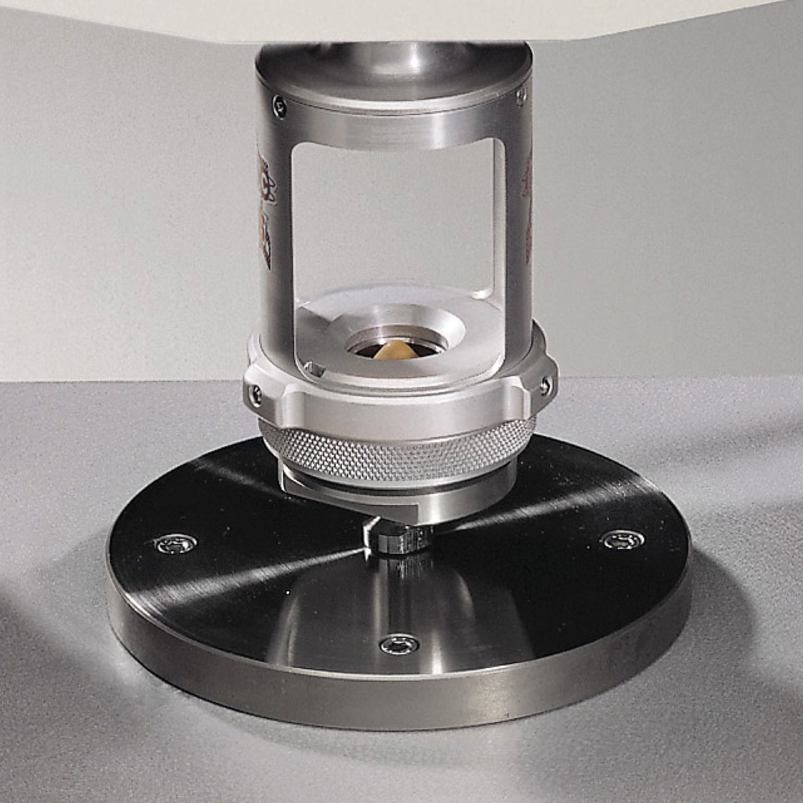Product overview
The measurement of leather strength and distension of the grain is important in the leather industry for evaluating the quality, durability, and performance of leather products. The strength and distension characteristics of leather's grain (the outer surface) provide valuable information about the material's mechanical properties and its suitability for various applications. Leather products require strength to maintain their structural integrity. Measuring leather strength helps prevent issues like tearing, breaking, or deformation during use.
This is also known as the 'Ball Burst Test' and identifies the strength and distension of the grain. This test exceeds the requirements of the standard as grain crack is measured without stopping the test. 'Material Yield' at grain crack is also accurately identified. Additional results for this test include the strength and distension of the grain at grain crack and ball burst, and the distance between grain crack and ball burst.
Typical graph

Technical information
Ideal sample form
Rigid material that can be supported over an orifice.
Installation
Full installation instructions are provided within the Education Zone of the latest Exponent/Connect software version and on the technical information sheet accompanying this product.
Chemical compatibility
Stable Micro Systems probes and attachments are commonly made from four materials: anodised aluminium (AA6082 T6), stainless steel (316 T), Delrin (acetyl copolymer) and Perspex (polycarbonate).
In general use, probes and attachments made from these materials will be suitable for testing food products and inert non-food materials.
The four materials listed above are not universally resistant to all types of chemicals and as such the compatibility of the probe/attachment material with the product (to be tested) must be established to prevent damage to the probes and attachments. If the compatibility of the product with the probe is unknown to the customer then the chemical information about the product (Material Safety Data Sheet or Product Data Sheet) should be submitted to Stable Micro Systems. Stable Micro Systems will then assess the suitability of the probe/attachment material for use with the product and advise accordingly. If this advice is not sought then Stable Micro Systems will not accept liability for probes/attachments damaged by chemical attack from the product being tested.
Cleaning and maintenance
All probes and attachments may be cleaned in warm (or hand hot) water using a mild detergent. A soft brush may be used but abrasive cleaning aids should be avoided. Stable Micro Systems products should not be microwaved or cleaned in a dishwasher.
Screw threads should be lightly lubricated after drying using a light lubricant, e.g. petroleum jelly, mineral oil. This will aid the fitting and unscrewing of the item. Each component of a probe or attachment should be wrapped separately when stored, to avoid scratching or chipping. This will safeguard against any unnecessary damage to the accessory.


